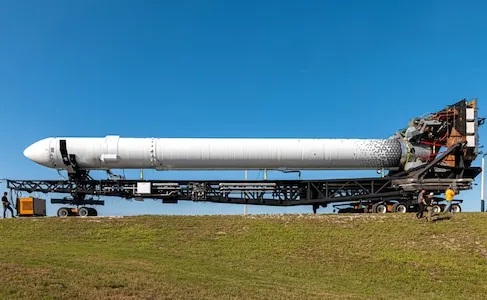The American aerospace company Relativity Space is trying for the third time to launch a 3D printed rocket
The world’s first 3D-printed rocket is set to make its third attempt at liftoff on Wednesday for the maiden flight of an innovative spacecraft that is cheaper to produce and fly.
The unmanned rocket, Terran 1, was scheduled to launch on March 8 from Cape Canaveral, Florida, but was delayed at the last minute due to propellant temperature problems.
Another attempt on March 11 was cleaned due to fuel pressure problems.
Relativity Space, the California-based private aerospace startup that built the rocket, hopes the third time’s the charm.
The company’s three-hour launch window begins at 10:00 PM ET (0200 GMT Thursday) on Wednesday.
Once lifted off, Terran 1 is scheduled to reach low Earth orbit after an eight-minute journey designed to gather data and demonstrate that the 3D-printed rocket can withstand the rigors of liftoff and spaceflight.
If the rocket succeeds in reaching low Earth orbit, it will be the first privately funded methane-fueled vehicle to do so, according to Relativity.
Terran 1 will not carry a payload on its first flight, but the rocket will eventually be able to lift up to 2,755 pounds (1,250 kilograms) into low Earth orbit.
The rocket is 110 feet (33.5 meters) tall and 7.5 feet (2.2 meters) in diameter.
85 percent of its mass is 3D printed with alloys, including nine Aeon 1 engines in the first stage and one Aeon Vacuum engine in the second stage.
It’s the largest 3D-printed object ever, according to the Long Beach-based company, and it says it was made using the world’s largest 3D metal printers.
Built in 60 days
Relativity’s goal is to produce a rocket that is 95 percent 3D printed.
Terran 1 will be powered by engines that use liquid oxygen and liquid natural gas — “propellants of the future” that could eventually fuel a trip to Mars, Relativity says.
SpaceX’s Starship and Vulcan rockets, developed by United Launch Alliance, use the same fuel.
Relativity is also building a larger Terran R rocket capable of lifting a 44,000 pound (20,000 kg) payload into low Earth orbit.
The first launch of the fully reusable Terran R is planned for next year.
A satellite operator can wait years for a spot on an Arianespace or SpaceX rocket, and Relativity Space hopes to speed up the timeline with its 3D-printed rockets.
Relativity said its 3D-printed rockets use 100 times fewer parts than traditional rockets and can be built from raw materials in just 60 days.
Relativity has signed $1.65 billion worth of commercial launch deals, mostly for Terran R, according to CEO Tim Ellis, who co-founded the company in 2015.
Read all the Latest Tech News here.




